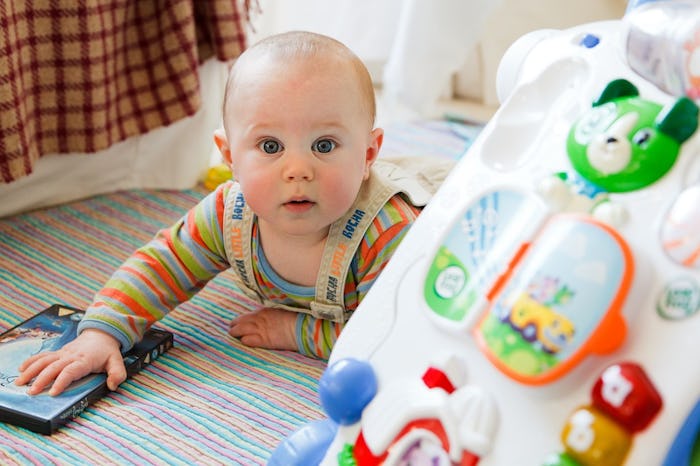You don't have to look far to find a milestone chart for babies. Almost every website and parenting book out there includes this handy guideline, which prepares you for what to expect with each month of your baby's life for the first few years. As much as I was told not to be too strict with this timeline, I just couldn't seem to help myself. So when my son wasn't rolling over right on time, I wondered, "should I help my baby roll?" I didn't know if this would do more harm than good, and hesitated to rush him through something he may not have been ready for.
To an adult, rolling over seems like a simple task, but for a baby, that's some seriously hard work! It takes muscle development and coordination to flip that baby body over, and according to Parenting magazine, these muscles are ready to be used for rolling over around four to six months old. Up until that point, all the small things your baby has been doing to strengthen those muscles has been preparing her for the long awaited roll over. You may begin to notice some signs that your baby is about to roll over, then. . . nothing. But don't freak out when this happens, since all babies learn this skill on their own time.
Comparing your baby's development with other babies and development charts isn't a slippery slope. When your baby actions don't align with what the chart says, it can cause worry and confusion. But as the American Pregnancy Association pointed out, rolling over is part of large motor development — which is just one of the four main categories that make up your baby's development — and focusing too much on the norms that charts project should be avoided. Each baby develops at their own rate, and it's important to factor in extra time for babies who were born premature.
Before your baby is ready to roll, you'll notice that her head and neck muscles are gaining strength. According to Parents magazine, your baby's muscle control starts at the head and works its way down. So once your baby can keep that cute little head from bobbling around, you'll know her neck muscles are increasing in strength, and chances are, she'll start to roll over soon.
As these signs of readiness continue to appear, you can start to help your baby prepare to roll. As the website for What To Expect recommended, start by providing plenty of tummy time for you baby. This helps your little nugget work out those muscles needed for rolling. Once she's strong enough, you can guide her arms to start working by encouraging her to reach for small toys your place near her. Finally, begin to gently rock her from side to side and belly to back, so she starts to feel the motion of rolling.
When the day finally comes, you probably won't be expecting it — one minute your baby will be on her belly and when you look back, she'll be on her back, giggling in pride at her accomplishment. And once she realizes she can do it, she's going want to roll over again and again — and every time you smile just as big as the first time. As you watch your baby grow, sharing these fun milestones make for sweet memories.
